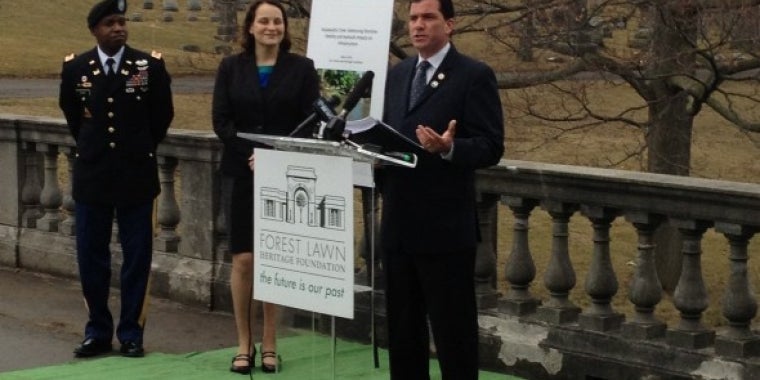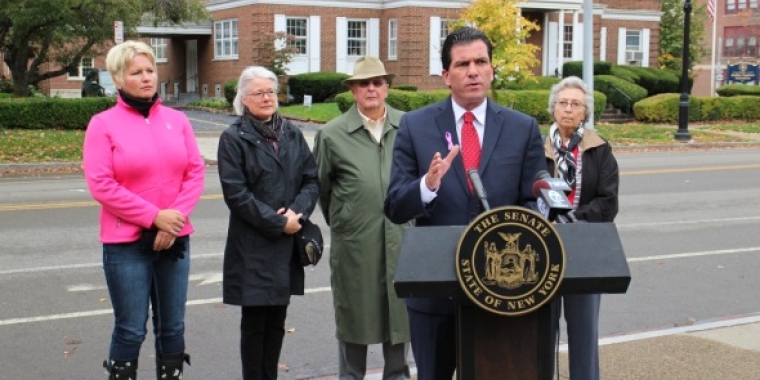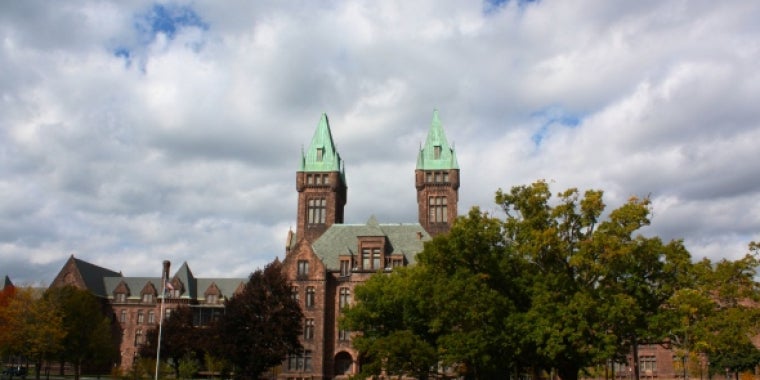Innovative Partnership Model Moves Scajaquada Creek Restoration Forward in Forest Lawn
Mark Grisanti
April 4, 2014
-
ISSUE:
- Environment
-
COMMITTEE:
- Environmental Conservation

Supported by a $100,000 grant from the New York Economic Development Capital Program, secured by NYS Senator Mark Grisanti, the first step in the efforts to restore Scajaquada Creek has been completed, with the release today of a detailed report on creek habitat and water quality in the 2 ½ mile portion of Scajaquada Creek that daylights and meanders through Forest Lawn.The report is the result of a two-year collaboration between the Forest Lawn Heritage Foundation, Buffalo Niagara Riverkeeper and the U.S. Army Corps of Engineers. It highlights the serious challenges that pose a threat to the long-term viability of Scajaquada Creek itself and to the waterways fed by the creek.“The profound power of Senator Grisanti’s vision coupled with the experience and expertise of Buffalo Niagara Riverkeeper and the U.S. Army Corps of Engineers has culminated in the successful completion of this valuable study,” said Joseph P. Dispenza, President of the Forest Lawn Heritage Foundation. “It will benefit all of us today and for generations to come.”The study, which began last year, was undertaken in support of the Forest Lawn Heritage Foundation’s efforts to improve the bridges, abutments and retaining walls spanning Scajaquada Creek within Forest Lawn Cemetery. It included field assessments of Scajaquada Creek habitat and water quality, and establishes a “baseline” set of conditions to measure threats to the creek’s infrastructure stability and to assess flood risks.“This data allows us to pinpoint areas of opportunity and establish threats to critical infrastructure,” said Major Michael A. Busby, Deputy District Commander U.S. Army Corps of Engineers. “Through this work, we were also able to establish a ‘water budget’ between Forest Lawn Cemetery and the downstream Hoyt Lake while developing surface and sub-surface models of water flow in the creek.”Beyond the insights that will guide planning efforts within Forest Lawn, the study provides the information necessary to establish a roadmap for creek restoration upstream and downstream. In addition, the results can be used by the Niagara River Remedial Action Committee to chart a course in eliminating Scajaquada Creek as a source of contaminated sediments to the Niagara River Area of Concern.“At the end of the day, water quality is a bi-partisan issue, so, when we’re presented with an opportunity to restore an important waterway like Scajaquada Creek, we have to take it.” said New York State Senator Mark Grisanti, “That’s particularly important here in Western New York, which is so dependent on our ‘Blue Economy’ as an engine for growth and development. The completion of this study is a critical step in moving the ultimate vision forward for Scajaquada Creek from a community liability to a community asset. I remain deeply committed to that vision, and will certainly do whatever I can to see it realized.”“We thank Senator Grisanti for bringing critical resources to Forest Lawn and Scajaquada Creek that we have been able to leverage through our partnership with the Army Corps of Engineers,” said Jill Jedlicka, Executive Director of Buffalo Niagara Riverkeeper. “Our collective work over the past two years is providing critical information, data and technical analysis needed for the next steps of creek restoration. There continues to be significant community support and forward momentum towards the transformation of this once forgotten waterway into a healthy and vibrant natural asset.”
Share this Article or Press Release
Newsroom
Go to Newsroom

